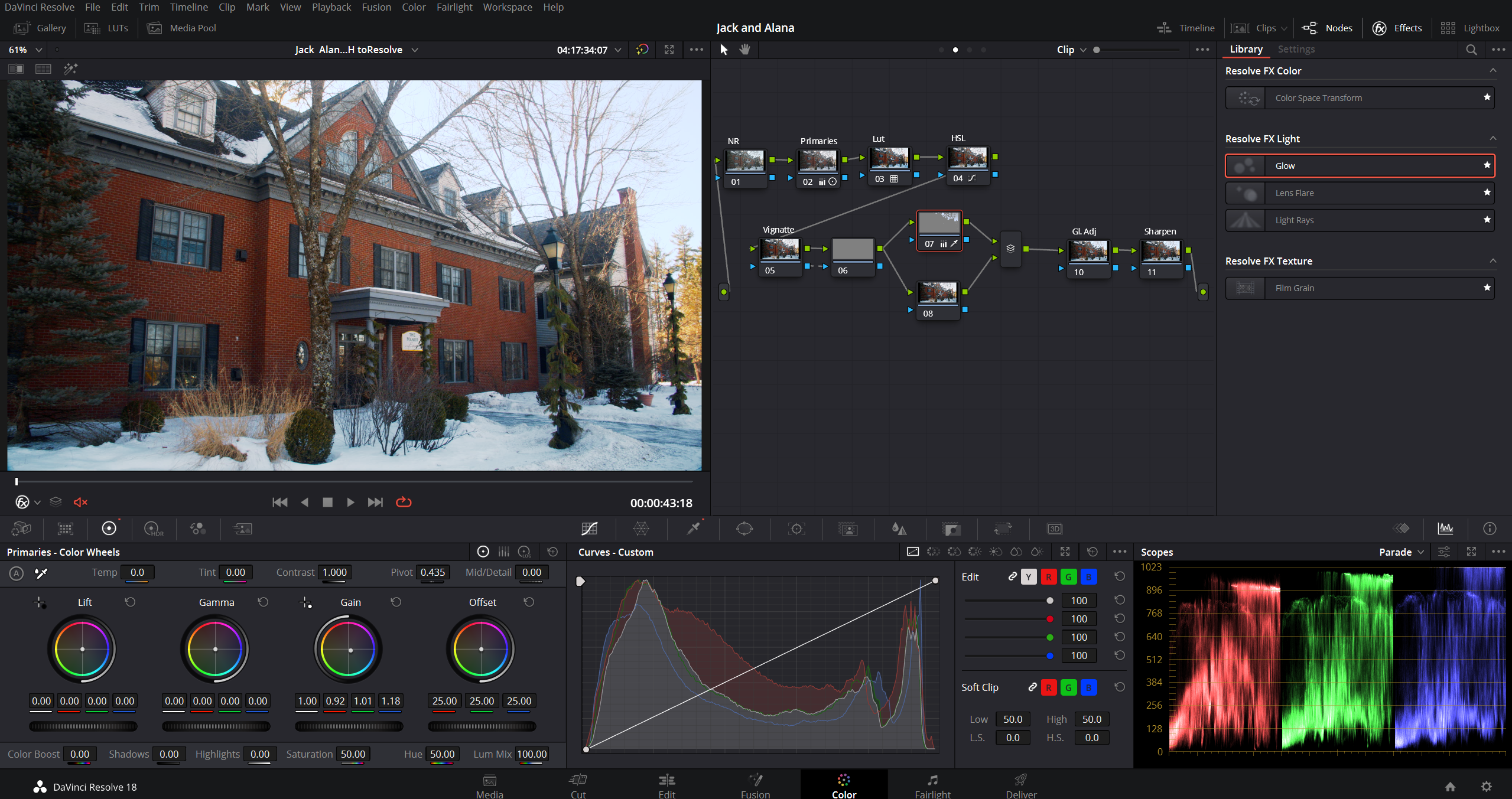In the world of video editing and post-production, color holds a special place. Like skilled video editors, colorists wield their brushes to bring forth the perfect blend of hues, tones, and contrasts. So, what is this magic?
Two powerful techniques reign supreme in post-production: color grading and color correction. Color grading and color correction are essential techniques in the world of video post production, but they serve different purposes. While both processes involve manipulating the colors in a video, they have distinct objectives and outcomes.
So what sets color grading apart from color correction? Prepare to unlock the secrets of visual storytelling as we delve into the realm of Color Grading & Color Correction.
What is Color Correction?
In the realm of post production, color correction serves as a crucial technique that enables creators to achieve a natural, neutral and a consistent look throughout their footage. Color correction involves meticulous fine-tuning of various elements such as hue, saturation, brightness, contrast, and white balance. These adjustments aim to create visual consistency, mimicking how the human eye perceives colors in the real world. By carefully manipulating these settings, colorists can enhance the overall appearance of the footage without resorting to a full grading process.
Color correction serves several purposes in video editing. Here are the key applications of color correction.
Achieving a natural appearance: The primary goal of color correction is to ensure the footage looks as close to reality as possible. It is particularly useful when working with natural picture profiles that already have well-balanced colors, minimizing the need for extensive grading.
Ensuring consistency: Color correction helps to achieve visual consistency between shots, especially when different cameras or lighting conditions result in variations in color appearance.
Resolving white balance inconsistencies: Color correction also tackles inconsistencies in white balance. It can fix footage captured with incorrect white balance settings or inconsistent results from auto white balance.
What is Color Grading?
Color grading is the artistic and creative process of transforming and stylizing the color scheme of video footage. Unlike color correction, which aims to achieve natural and neutral visuals, color grading focuses on evoking specific emotions and creating a desired look.
Color grading allows filmmakers and video editors to go beyond the limitations of reality and infuse their projects with a distinct atmosphere and mood. By creatively adjusting the color palettes, contrast levels, saturation, and tint, colorists can dramatically alter the visual appearance and evoke specific emotional responses from viewers. It adds depth, dimension, and artistic expression, establishing the overall tone and mood of the project.
Color grading is mainly used for the following purposes.
Enhancing storytelling: Color grading enhances the film’s narrative by emphasizing elements and creating a cohesive visual style. Filmmakers can manipulate colors to evoke different emotions, such as warmth for romance or desaturation for melancholy. They can unleash their creativity to craft a unique visual language that supports the story.
Shooting on flat or Log profiles: Filmmakers often shoot using flat or Log profiles to preserve more dynamic range in their footage. Color grading is essential in these cases as it brings out the full potential of the image.
Achieving a stylistic appearance: Color grading enables filmmakers to achieve a specific artistic vision or create a distinctive visual style for their films. By manipulating the color scheme and overall look of the footage, they can create unique atmospheres, such as a gritty and desaturated look for a crime thriller or a vibrant and saturated palette for a fantasy adventure.
Applying and tweaking LUTs: Look-Up Tables (LUTs) are predefined color grading presets that can be applied to footage to achieve a desired look or style. Color grading allows filmmakers to apply and adjust LUTs, giving them the flexibility to experiment with different looks and tailor them to their specific requirements.
Enhancing dynamic range: Color grading expands the dynamic range of footage, making it visually more appealing and impactful. By adjusting highlights and shadows, color grading brings out details in the brightest and darkest areas of the image, resulting in a visually dynamic and engaging final product.
Precision over the color palette: Color grading provides fine-tuning capabilities for the color palette of the footage, allowing filmmakers to have advanced control over hues, saturation, and overall color balance.
Evoking specific emotions: By carefully selecting and manipulating colors, filmmakers can create a visual language that enhances the storytelling and elicits emotional responses. Warm tones evoke nostalgia or comfort, while cool tones create a sense of distance or melancholy.
Final Thoughts
Color grading and color correction play crucial roles in the post-production process, contributing significantly to the overall visual impact of a film. While color correction ensures a natural and consistent look, color grading adds an artistic and emotional dimension, shaping the viewer’s perception and enhancing the storytelling.
For professional color grading services, consider partnering with Motion Grades. We are a reliable post-production company specializing in color grading. Our expertise and passion for enhancing visuals can elevate your film to new heights, capturing the desired atmosphere and evoking the intended emotions.
Get in touch with us to achieve superior results with color grading.



